Losing part of a hand changes many things in life. Everyday actions like holding a cup, turning a key, or typing on a phone can suddenly feel difficult. But the human body is amazing. With the right training, muscles can get stronger, movements can become smoother, and confidence can grow again.
For people using a partial hand prosthetic, rehabilitation exercises are not just about strength. They are about learning to work with the device as if it were part of the body. It is about teaching the brain and muscles to move in new ways so daily tasks become natural once more.
This guide is made to help you do just that. We will walk through practical exercises, tips, and small changes that can make a big difference. Every step is explained simply, so you can follow it easily whether you are working with a therapist or practicing at home.
The goal is not speed. It is progress. Every little improvement matters. With patience and steady effort, your prosthetic can become a tool that helps you live freely and do more of what you love.
Warm-Up and Muscle Activation
Why Warming Up Matters
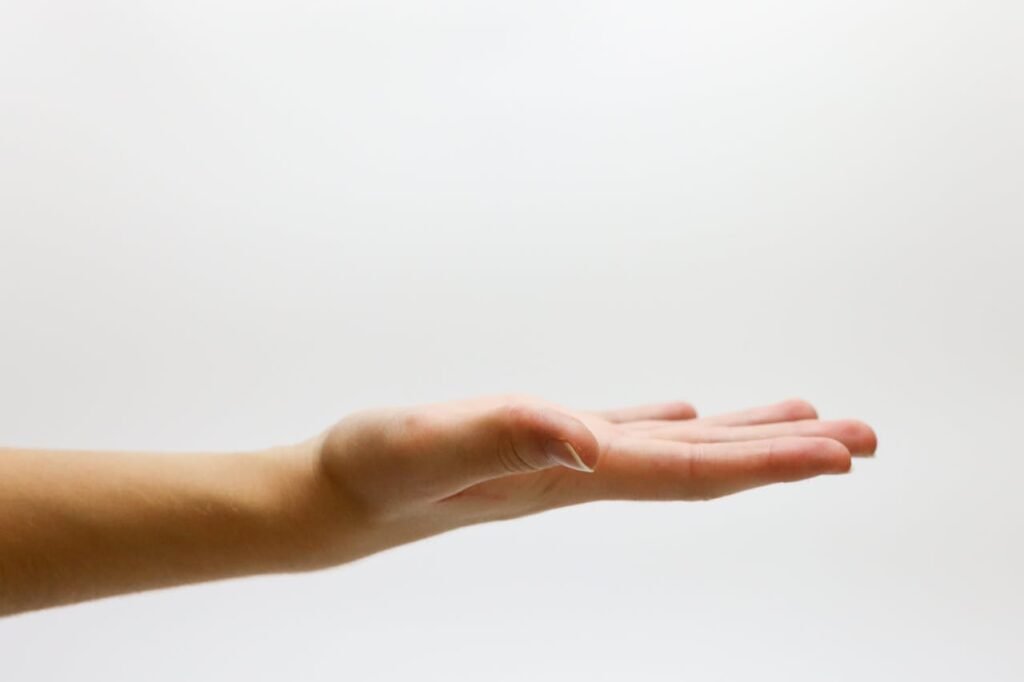
Before using your prosthetic for tasks or exercises, your body needs to prepare.
Warming up helps blood flow to your muscles, reduces stiffness, and lowers the risk of strain.
It also wakes up the nerves that control your prosthetic movements.
Gentle Joint Movements
Start by moving your wrist, elbow, and shoulder in slow circles.
Even if your prosthetic covers part of your hand, the surrounding joints still need to stay mobile.
Do each movement for about 30 seconds.
Soft Muscle Squeezes
If your prosthetic uses myoelectric signals, activating the right muscles is key.
Try gently contracting the muscles in your forearm, holding for 3 seconds, then relaxing.
Repeat 10 times to wake up your control points.
Controlled Breathing
Steady breathing helps you stay relaxed and improves oxygen flow to your working muscles.
Inhale deeply through your nose, then slowly exhale through your mouth.
Do this for one minute before starting more intense work.
Building Grip Control
Understanding Grip Types
Your prosthetic may allow different grip patterns like pinch, power, or tripod grip.
Each grip works for different tasks, so practicing them daily is important.
The goal is smooth, controlled motion rather than speed.
Pinch Practice
Use soft items like a sponge or small ball.
Pinch them gently, hold for two seconds, then release slowly.
This builds accuracy without putting too much strain on your device.
Power Hold Training
Pick up a light object such as a water bottle.
Grip it firmly without crushing it, then place it back down.
This helps you judge how much pressure is needed for different items.
Alternating Grips
Switch between pinch and power grips during one session.
This trains your brain to adapt quickly in real-life situations.
It also prevents muscle fatigue from repeating one movement.
Strength Training for Partial Hand Prosthetic Users
Why Strength Training Is Important
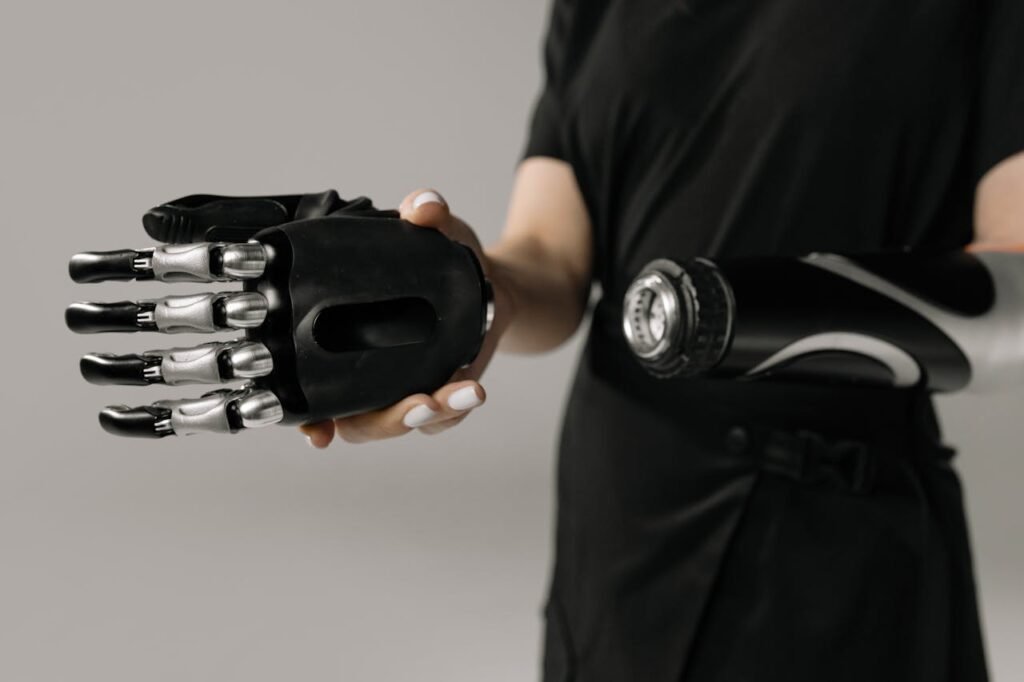
Using a partial hand prosthetic is not only about learning new movements — it’s also about building the muscle power to support those movements.
Even if the prosthetic itself provides grip or movement, your arm, wrist, and shoulder muscles need to be strong enough to guide and control it.
When these muscles are stronger, you can use your device for longer periods without feeling tired or uncomfortable.
Strength training also protects your body from overuse injuries.
When one part of the body is weak, other parts try to make up for it, which can lead to pain.
By keeping your whole upper limb strong, you reduce that risk.
Resistance Band Exercises
Resistance bands are a simple and safe way to build strength without heavy equipment.
They are also gentle on joints while still giving you a challenging workout.
Start by attaching a band to a stable surface like a doorknob or table leg.
Hold the other end with your prosthetic or natural hand.
Pull the band towards your body slowly, hold for two seconds, and then return to the starting position.
Do 8–12 repetitions, resting for a few seconds between each set.
This exercise works the muscles in your forearm, biceps, and shoulder, which all play a role in controlling your prosthetic.
Forearm Rotation Drills
Forearm rotation is important for tasks like turning keys, twisting jars, or even using a computer mouse.
Sit comfortably with your elbow bent at a 90-degree angle.
With your prosthetic or sound hand, slowly rotate your forearm so your palm faces up, then rotate it back down.
If possible, hold a lightweight object while doing this to make the movement slightly harder.
Repeat 10–15 times on each side.
This improves coordination between your wrist and elbow, making your prosthetic more responsive during daily activities.
Shoulder and Back Support Work
Your shoulder and back muscles provide the foundation for all your upper limb movements.
When these muscles are strong, your prosthetic feels lighter and easier to handle.
Try a simple wall push-up.
Stand about two feet away from a wall, place your hands against it, and slowly bend your elbows to bring your chest closer.
Push back to the starting position.
Do 10–15 repetitions, keeping your movements slow and controlled.
This works your chest, shoulders, and upper back together, improving stability when using your prosthetic for heavier tasks.
Gradual Weight Progression
If you are comfortable and your therapist agrees, you can use light dumbbells for certain exercises.
Start with 0.5 to 1 kg weights, and focus on slow, steady lifts rather than speed.
For example, a bicep curl with light weight can help strengthen the arm that supports your prosthetic.
Always keep your posture straight to avoid strain on your back or neck.
The key is gradual progress.
Do not rush to lift heavier weights — consistency is more important than intensity when you are training with a prosthetic.
Coordination and Dexterity Training for Partial Hand Prosthetic Users
Why Coordination Matters
A partial hand prosthetic is not just about holding or lifting.
It’s about doing those actions with control, accuracy, and fluidity.
Coordination exercises train your brain, muscles, and prosthetic to work as one team.
Good coordination helps in small but important daily tasks — buttoning a shirt, picking coins from a table, or pouring a drink without spilling.
Without it, even strong muscles can struggle with delicate movements.
Fine Motor Practice with Small Objects
Small objects are perfect for dexterity training because they require careful grip control.
Start with something simple like picking up paper clips or beads from a table and placing them in a container.
Move slowly at first.
The goal is not speed — it’s accuracy and smooth motion.
Once you feel confident, try using slightly smaller objects or placing them further apart to make it more challenging.
The “Coin Flip” Exercise
Place a coin flat on your table.
Use your prosthetic to slide it to the edge, then gently flip it over without letting it drop.
This teaches control over force and movement, which is crucial when handling delicate items.
You can make it harder by switching to lighter objects like paper tokens that require more precision.
Alternating Grip Tasks
Many daily activities require changing grip types quickly.
For example, holding a pen to write, then switching to a power grip to open a jar.
Practice by keeping two objects in front of you — one for a pinch grip and one for a power grip.
Switch between them in one fluid motion.
Over time, your brain will learn to switch grip types almost automatically.
Timed Coordination Challenges
Once you’re comfortable with different grips, add a timing element to your exercises.
For example, set a 30-second timer and see how many small objects you can move from one bowl to another.
This improves your reaction time and makes your prosthetic feel more like a natural extension of your arm.
Always focus on smoothness over speed — speed will come naturally with practice.
Everyday Dexterity Drills
Coordination training doesn’t have to be boring or formal.
Use real-life actions as part of your exercise.
Examples include:
- Stirring a cup of tea without spilling.
- Zipping a bag with one hand while holding it steady with the other.
- Typing short sentences on a computer keyboard.
These small daily movements build skill and confidence without feeling like “exercise time.”
Stretching and Flexibility for Partial Hand Prosthetic Users
Why Flexibility Is Important
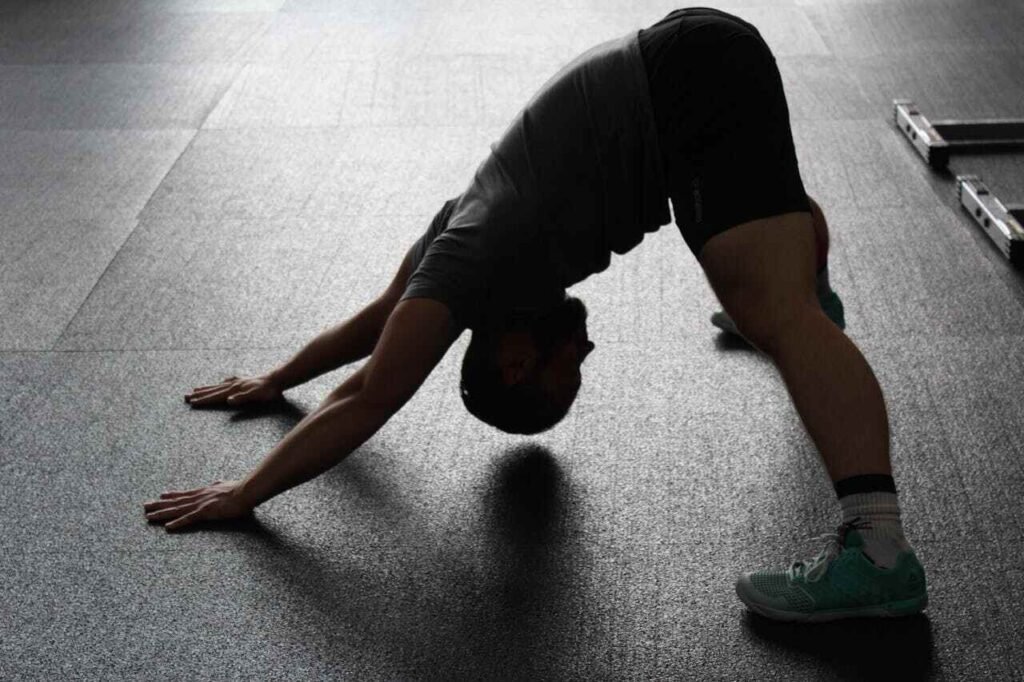
Flexibility is often overlooked, but it plays a huge role in using a prosthetic comfortably.
When your joints and muscles can move freely, you avoid stiffness, reduce pain, and make movements smoother.
For partial hand users, flexibility isn’t just about the hand — it’s about the entire chain of movement from your fingers to your shoulder.
Tightness in one area can limit how well your prosthetic responds in another.
For example, a stiff shoulder can affect your ability to reach out and pick something up smoothly.
Regular stretching helps your muscles stay loose, keeps blood flowing, and supports good posture, which is essential for long-term comfort.
Gentle Wrist Stretches
Even with a prosthetic, your wrist still plays an important role in positioning and movement.
A stiff wrist can make it harder to guide your prosthetic precisely.
Sit comfortably and rest your forearm on a table.
Gently bend your wrist forward, hold for 10 seconds, then backward, holding again for 10 seconds.
Repeat this 5–8 times.
If you feel tension, that’s okay — but you should never feel sharp pain.
With time, this simple stretch can improve your control and reduce fatigue.
Forearm Flexibility Movements
Your forearm muscles control many of the signals that operate a myoelectric prosthetic.
If these muscles are tight, they can send weaker or less accurate signals.
To stretch your forearm, extend one arm in front of you with the palm facing up.
Use your other hand to gently pull back on the fingers (or prosthetic attachment) until you feel a stretch in your forearm.
Hold for 15–20 seconds, then switch sides.
This not only improves flexibility but can also help prevent muscle cramps during extended prosthetic use.
Shoulder Mobility Work
The shoulder is the anchor for all upper limb movements.
If it becomes tight, you may unconsciously strain your neck or back while using your prosthetic, leading to discomfort.
Stand or sit tall and slowly roll your shoulders forward in a circle 10 times, then backward 10 times.
Next, lift one arm (or prosthetic) overhead and lean gently to the opposite side, holding for 15 seconds.
This opens up the muscles along your side and improves your range of motion.
For extra benefit, combine these stretches with deep breathing to release tension.
Neck and Upper Back Relief
When using a prosthetic, you might unknowingly lean to one side or lift your shoulder slightly, creating stiffness in the neck and upper back.
To release this tension, sit up straight and slowly tilt your head to one side until you feel a stretch along your neck.
Hold for 15 seconds, then switch sides.
Follow this by gently tucking your chin to your chest and holding for another 15 seconds.
You can also clasp your hands behind your head and gently open your elbows outward to stretch your chest and upper back.
Finger and Partial Hand Stretching
If you still have part of your natural hand, keeping those joints flexible is just as important as maintaining prosthetic function.
Spread your fingers (or remaining digits) as wide as possible, hold for 5 seconds, then relax.
Repeat 10 times.
Follow this by making a gentle fist and holding for 5 seconds before opening again.
These movements help keep the small muscles active and prevent stiffness in the natural part of your hand.
Dynamic Stretching Before Use
Static stretching is good for flexibility, but before using your prosthetic for active tasks, dynamic movements can help warm you up.
Try gently swinging your arm forward and backward for 30 seconds.
Follow this with small, controlled circles with your shoulder, gradually making them larger.
This prepares your joints and muscles for activity without overstretching them.
Combining Stretching With Daily Activities
One of the easiest ways to stay consistent with stretching is to blend it into your daily routine.
For example:
- Stretch your wrists while waiting for your tea or coffee to brew.
- Do a neck stretch while watching TV.
- Roll your shoulders while sitting in traffic.
When stretching becomes a habit, it stops feeling like a chore and starts feeling like a natural part of your day.
Stretching to Prevent Overuse Injuries
Overuse injuries can happen when certain muscles are repeatedly stressed without enough rest or flexibility work.
For prosthetic users, this might occur in the forearm, shoulder, or neck from repetitive movements.
Stretching after each prosthetic use session helps release built-up tension.
This reduces the risk of tendon inflammation, joint pain, or nerve compression over time.
Posture Awareness During Stretching
Good posture makes stretching more effective.
When you slouch, you limit your range of motion and place unnecessary strain on your body.
Before starting a stretch, stand or sit tall, with your shoulders relaxed and your core gently engaged.
Imagine a string pulling the top of your head toward the ceiling — this will help keep your spine aligned.
Tracking Your Flexibility Progress
It’s easy to overlook progress in flexibility because changes happen gradually.
Keep a small log of how far you can move in each stretch, or how long you can hold without discomfort.
Over time, you’ll notice you can reach higher, bend further, or twist more easily.
These small improvements translate directly into better prosthetic control and less fatigue.
Endurance and Stamina Building for Partial Hand Prosthetic Users
Why Endurance Matters
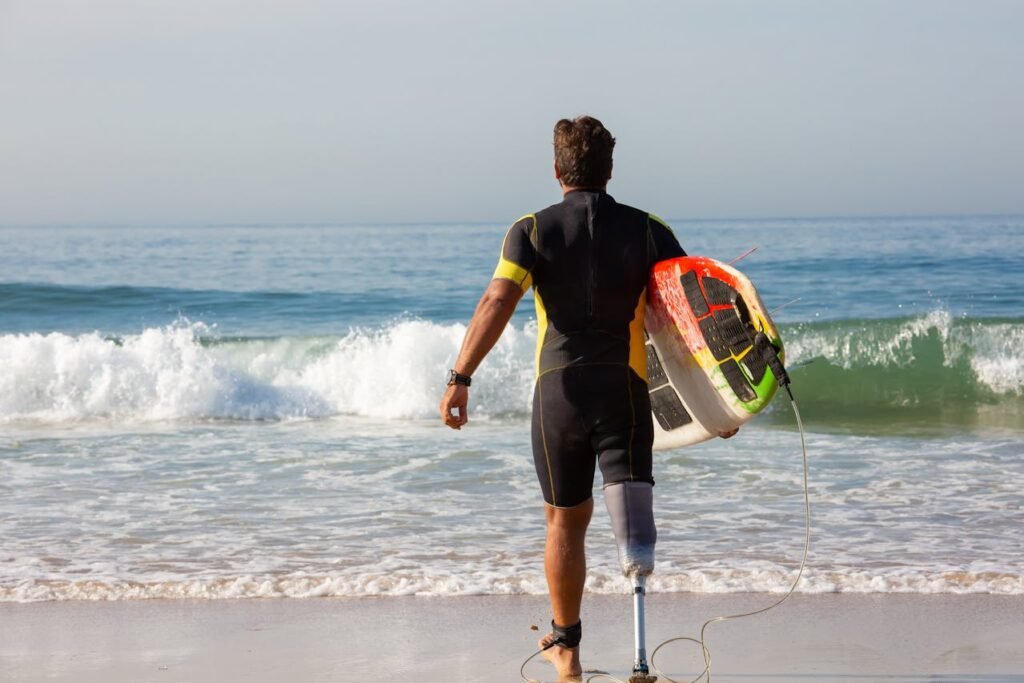
Endurance is the ability to keep doing a task for a longer time without feeling overly tired.
For partial hand prosthetic users, this is especially important because using the device takes both physical and mental effort.
It’s not just about strong muscles — it’s about having the stamina to hold, lift, or control objects repeatedly throughout the day.
Better endurance means you can cook a full meal, work at a desk, or play with your kids without having to stop because your arm feels heavy or your muscles feel sore.
The Role of Consistent Practice
Building stamina is similar to training for a long walk — you don’t start with hours of activity on day one.
You begin small, then slowly increase your duration and complexity.
With prosthetic use, this might mean practicing holding an object for 30 seconds today, then 45 seconds tomorrow.
Over weeks, your muscles adapt, and what once felt tiring becomes easy.
Low-Intensity, Long-Duration Tasks
One of the safest ways to build endurance is to choose activities that are light but sustained.
This puts less strain on your muscles while still challenging them to work for longer periods.
Examples include folding laundry, cutting vegetables, stirring a pot, or typing on a keyboard.
These tasks can be part of your normal day, so you build stamina without setting aside “special” exercise time.
Progressive Holding Exercises
Holding an object for an extended time is an excellent endurance drill.
Start with something light like an empty cup.
Hold it for 20–30 seconds, keeping your grip steady without squeezing too hard.
As this becomes comfortable, increase the time by 5–10 seconds per session.
When you can hold the light object for a full minute with ease, switch to a slightly heavier object, like a half-filled water bottle.
The goal is to train your muscles to work longer without fatiguing quickly.
Alternating Activity and Rest
Endurance training isn’t about pushing non-stop — it’s about balancing work and recovery so your muscles grow stronger over time.
Try this cycle:
- Perform a light activity for 2–3 minutes.
- Rest for 30–60 seconds.
- Repeat for 5–8 rounds.
This method is known as “interval endurance training” and is effective for both muscle and cardiovascular stamina.
Whole-Arm Endurance Workouts
Since your prosthetic is supported by the entire arm, endurance training should include all major muscles — forearm, bicep, tricep, shoulder, and even your core.
A simple circuit could be:
- Wall push-ups (10 reps)
- Resistance band pulls (10 reps each arm)
- Arm swings (20 swings)
- Light object holding (30 seconds)
Repeat this sequence 3–4 times, resting briefly between rounds.
Mental Endurance and Focus
Using a prosthetic also takes mental stamina — concentration is required to control movements, especially in the early stages.
Long periods of focus can be mentally tiring, so training your mind is as important as training your muscles.
A good way to improve mental endurance is to combine physical drills with a simple task, like sorting objects by color or arranging items in a pattern.
This forces your brain to stay engaged while your body works, just like in real daily life.
Breathing for Stamina
When we get tired, our breathing often becomes shallow, which makes fatigue worse.
Controlled breathing delivers more oxygen to your muscles and brain, helping you sustain activity for longer.
While using your prosthetic, try inhaling deeply through your nose for 4 seconds, holding for 1 second, then exhaling slowly through your mouth for 5–6 seconds.
This rhythm keeps you calm and focused during extended use.
Avoiding Overuse While Building Endurance
Endurance training should never cross into overuse injury territory.
Signs of overuse include persistent soreness, swelling, tingling, or a sharp decrease in performance.
If you feel these symptoms, it’s better to rest for a day or two than to push through and risk injury.
Your body grows stronger during recovery — not during the workout itself.
Tracking Your Progress
Keeping a simple record of your endurance exercises helps you see improvement over time.
You can note how long you could hold an object, how many repetitions you completed, or how long you lasted before needing a break.
Even small gains — like holding something for 10 extra seconds — are worth celebrating.
Over months, these add up to major increases in ability and confidence.
Bringing Endurance Training Into Daily Life
One of the most effective ways to keep endurance training consistent is to make it part of your day.
Instead of setting aside a separate “training” block, try using your prosthetic for simple household activities as much as possible.
Examples:
- Carrying light grocery bags from the car.
- Wiping down kitchen counters.
- Holding a book or tablet while reading.
These activities are low-stress but sustained, which is exactly what endurance building needs.
Functional Task Training for Partial Hand Prosthetic Users
Why Functional Training Is Different
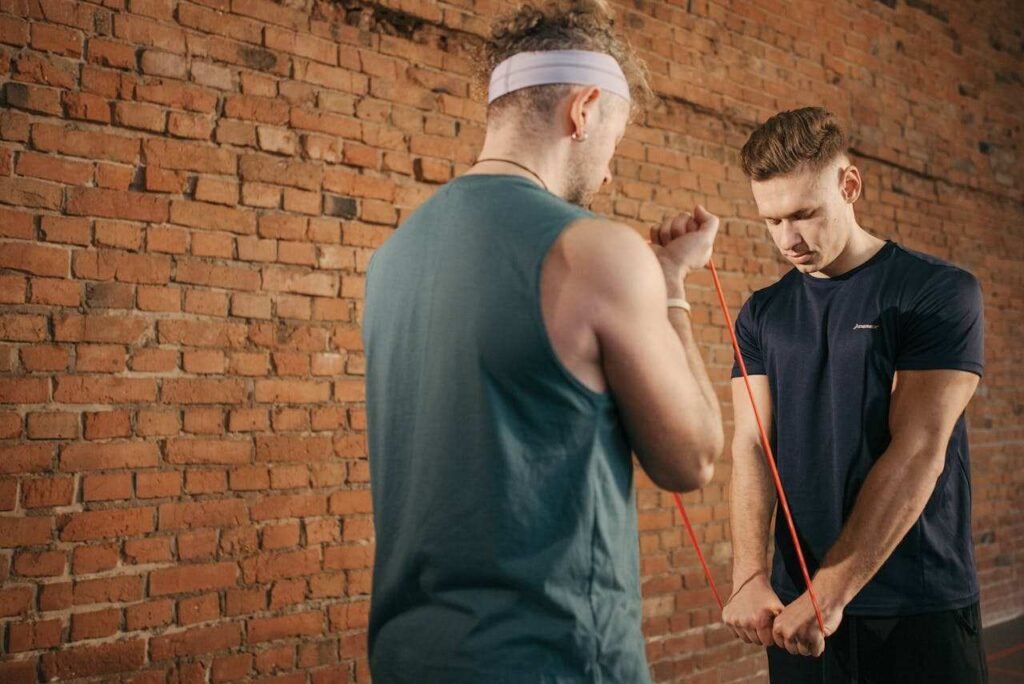
Functional training is about practicing the exact movements you use in daily life.
Unlike general strength or endurance exercises, functional training focuses on real-world actions like opening a jar, buttoning a shirt, or pouring a drink.
The idea is to combine strength, coordination, flexibility, and stamina into one smooth, useful movement.
This makes the training more directly relevant and speeds up adaptation to your prosthetic in everyday situations.
Breaking Down Everyday Actions
A task like making tea may seem simple, but it involves multiple steps — picking up a kettle, tilting it, holding a cup, and possibly stirring.
Each of these is a small skill on its own.
Breaking actions into smaller steps lets you practice them individually before combining them.
Once you can do each step well, linking them together feels much easier and more natural.
Cooking-Related Tasks
Cooking is one of the best ways to train your prosthetic in real-life movements.
It involves lifting, gripping, twisting, and fine control — all in a short period of time.
Start with basic actions like holding a spoon to stir a pot or picking up vegetables one by one.
Move on to slightly harder tasks like opening jars, turning taps, or pouring oil without spilling.
The variety in textures, shapes, and weights during cooking challenges your control and adaptability.
Dressing and Grooming Practice
Getting dressed and grooming yourself are daily essentials that can be turned into functional training sessions.
Start with easy tasks like pulling up a zipper or fastening Velcro straps.
Once comfortable, try more complex skills like buttoning a shirt or tying shoelaces.
For grooming, practice holding a toothbrush, comb, or razor steadily.
These require controlled grip pressure so you don’t drop or damage them.
Office and Work Skills
If you work at a desk, practice typing on a keyboard, moving a mouse, or handling stationery.
If your work is more physical, simulate those actions at home in a safe environment before doing them in the workplace.
Even small things like picking up paper clips, flipping through pages, or opening drawers count as functional training.
Lifting and Carrying Items
Carrying items safely is a big part of daily living.
Start with light loads — for example, carrying a shopping bag from one room to another.
Focus on keeping your posture straight and your grip steady.
Once you’re comfortable, increase the weight slightly or carry two lighter items at the same time to build balanced strength.
Task Switching Drills
Real life rarely asks you to do one movement repeatedly.
More often, you need to switch between different grips and actions quickly.
Set up a small “task circuit” at home — for example:
- Pick up a spoon and stir.
- Put it down and pick up a cup.
- Place the cup on a shelf.
- Turn a door handle.
Run through this sequence several times to train smooth transitions between different actions.
Simulating Public Situations
Confidence in using your prosthetic in public grows when you practice tasks in a controlled way first.
For example, you can rehearse paying at a shop by picking coins from a pocket and handing them over.
Or practice holding a shopping basket, walking a short distance, and placing it on a counter.
These small, realistic drills help reduce hesitation when you’re outside and need to perform these actions quickly.
Using Different Object Sizes and Textures
Daily life involves objects that vary in size, weight, and feel — a metal spoon, a plastic bottle, a fabric bag.
Practicing with different items prepares your prosthetic for these changes.
For example, try gripping a soft sponge, then switch to a solid wooden spoon, then to a smooth glass.
Your brain learns to adjust pressure and grip automatically based on the object’s texture and resistance.
Practicing Safety Movements
Some tasks require you to react quickly to avoid accidents — for example, letting go of something hot or sharp.
You can train for safety by practicing quick release movements.
Hold an object and drop it into a soft basket when you hear a signal or timer beep.
This teaches your brain to react faster, reducing the chance of injury in real-life situations.
Keeping Functional Training Fun
Functional task training doesn’t need to be repetitive or boring.
Turn it into a small game or challenge — time yourself to see how quickly you can complete a sequence, or try it with your eyes closed to improve tactile control.
You can also involve friends or family by letting them set small “missions” for you to complete.
This keeps the training interesting and gives you social support.
Balance, Posture, and Body Alignment for Prosthetic Users
Why Balance Matters
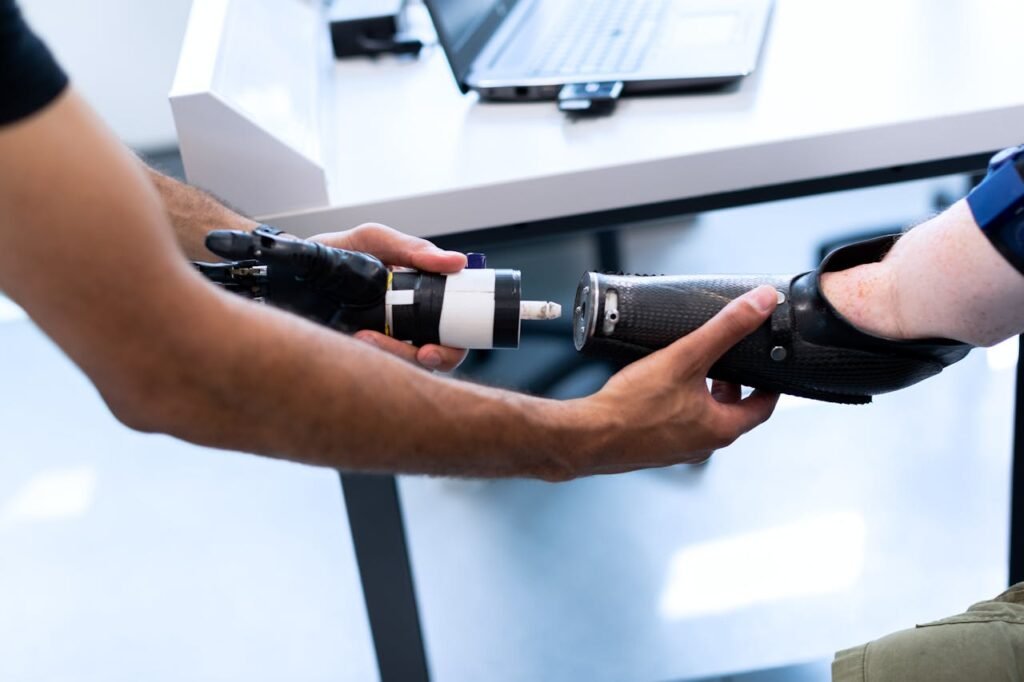
When you lose part of a hand and start using a prosthetic, your body naturally changes how it moves.
You may shift your weight differently, lift one shoulder higher, or lean slightly without realizing it.
These small adjustments help you adapt in the short term, but over time they can cause muscle strain, back pain, and fatigue.
That’s why balance and posture training is just as important as strength or coordination exercises.
Understanding Body Alignment
Good body alignment means your head, shoulders, hips, and feet are in a natural, vertical line.
When alignment is correct, every movement feels smoother and requires less energy.
If you are leaning forward, twisting, or bending often while using your prosthetic, you may be working harder than necessary.
Training your body to stay aligned will help you feel more stable and reduce long-term stress on your joints.
Simple Posture Check
Stand in front of a mirror with your arms relaxed.
Check if your shoulders are level, your head is straight, and your weight feels even on both feet.
If one shoulder looks higher or your head tilts, gently adjust until you’re balanced.
This is your “neutral” posture — aim to return to this position regularly during your day.
Core Strength for Better Balance
Your core — the muscles around your stomach, sides, and lower back — acts as the body’s stabilizer.
A strong core makes it easier to stay upright and move fluidly with your prosthetic.
Start with simple seated or standing marches.
Lift one knee slightly, hold for 2 seconds, then lower it and switch sides.
Do this for 20–30 repetitions to wake up your stabilizing muscles.
You can also try seated torso twists, slowly rotating side to side while keeping your hips still.
This improves both balance and spinal mobility.
Weight Shifting Practice
When you use a prosthetic, your natural balance may shift more toward your sound side.
Weight shifting exercises teach you to distribute your weight evenly again.
Stand with your feet shoulder-width apart.
Slowly lean your weight onto your prosthetic side for 3 seconds, then shift to your sound side for another 3 seconds.
Repeat for 10–15 cycles, moving smoothly without sudden jerks.
This gentle drill retrains your body to feel stable on both sides.
Shoulder Positioning Awareness
Your shoulder position plays a big role in how your prosthetic feels to use.
If you keep your shoulder lifted or rolled forward, it can cause fatigue and reduce range of motion.
To correct this, sit or stand tall and imagine gently tucking your shoulder blades down and back.
Hold for 5 seconds, then relax.
Do this several times a day to build muscle memory for better shoulder alignment.
Combining Posture with Movement
Once you’re comfortable with basic posture, start practicing it during functional tasks.
For example, keep your back straight while lifting a pot, or maintain level shoulders while typing.
This teaches your body to maintain good alignment even when you’re focused on other tasks.
Preventing Overcompensation
Overcompensation happens when one part of your body does extra work to make up for another.
For prosthetic users, this often means using the sound arm for most tasks, which can lead to overuse injuries.
The best way to prevent this is to consciously involve your prosthetic in everyday actions, even if it’s slower at first.
This keeps both sides of your body active and balanced.
Stretching for Alignment
Posture isn’t only about strength — flexibility is also key.
Tight chest muscles can pull your shoulders forward, and tight hip muscles can tilt your pelvis.
Daily stretches for the chest, upper back, and hips help keep your alignment in check.
Even two minutes of stretching every morning can make a difference in how your body carries itself.
Mindful Movement
One of the most effective tools for posture and balance is mindfulness — paying attention to how your body feels while you move.
Ask yourself during the day:
- Are my shoulders relaxed?
- Is my weight even?
- Am I leaning without noticing?
These small checks help you stay aware and correct your posture before strain builds up.
Injury Prevention and Recovery for Partial Hand Prosthetic Users
Why Injury Prevention Is Essential

Using a partial hand prosthetic is physically demanding.
Even if it feels natural, your body is still adjusting to new movement patterns and workloads.
Without care, overuse injuries can develop in the forearm, shoulder, neck, or even the lower back.
Prevention ensures you can use your prosthetic confidently and comfortably for years to come.
Listening to Your Body
The most important prevention tool is awareness.
If you feel a sharp pain, swelling, or tingling, stop and rest immediately.
Mild muscle soreness after new exercises is normal, but persistent or worsening discomfort needs attention.
Ignoring early signs can turn a minor issue into a long-term problem.
Proper Fit and Alignment
A poorly fitted prosthetic can cause rubbing, skin irritation, or joint strain.
Schedule regular check-ups with your prosthetist to make sure your device still fits correctly as your body changes.
Small adjustments in socket shape, padding, or alignment can make a big difference in comfort and safety.
Gradual Progression
Jumping straight into heavy or complex tasks can overload your muscles and joints.
Instead, build up slowly — increase weight, duration, or complexity in small steps.
This gives your muscles, tendons, and skin time to adapt, reducing the risk of injury.
Skin Care and Protection
The skin under and around your prosthetic can become sensitive from constant contact.
Check your skin daily for redness, blisters, or sores.
Keep the area clean and dry, and use prosthetic liners or sleeves if recommended.
Moisturize the skin at night to prevent dryness and cracking.
Cross-Training for Balance
Relying only on prosthetic exercises can lead to muscle imbalances.
Incorporate other activities like walking, swimming, or gentle yoga to keep your whole body active.
This not only boosts overall fitness but also improves circulation and flexibility.
Rest and Recovery Days
Recovery is just as important as training.
Your muscles need time to repair and grow stronger after use.
Plan at least one rest day each week, and use it for light activity like stretching or a short walk.
If you’ve done a particularly demanding task, allow extra recovery time before repeating it.
Professional Support
A physiotherapist can guide you through safe, personalized routines.
They can also spot issues like muscle tightness or poor posture before they cause injury.
Don’t wait until something hurts — regular check-ins can help keep you on track.
Conclusion
Living with a partial hand prosthetic is a journey of learning, patience, and small victories.
The exercises in this guide — from warm-ups to functional tasks — are not just about physical ability.
They are about building confidence, independence, and the freedom to do more of what you love.
Progress will come step by step.
Some days will feel easier than others, but every practice session strengthens not just your muscles, but your trust in yourself and your prosthetic.
Celebrate the small wins — holding a cup without thinking, buttoning a shirt faster than before, or completing a task you once thought impossible.
These moments are proof that your hard work is paying off.
And remember, you are not alone in this process.
Support from therapists, prosthetic specialists, family, and communities like ours at RoboBionics can make the journey smoother and more empowering.
Your prosthetic is more than a device — it’s a partner in regaining your independence.
With the right care, training, and mindset, it can help you live fully, confidently, and without limits.
If you’re ready to take the next step, you can book a free demo with us at RoboBionics.
We’ll guide you through the possibilities, answer your questions, and help you find the solutions that fit your life best.



